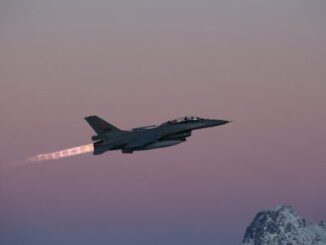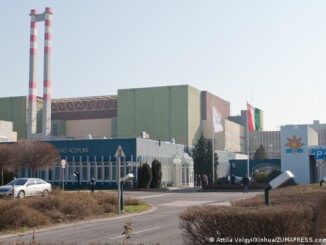
HIGHLIGHTS
Current OPEC+ supply agreement ends in September
Quotas will need renegotiating, with credibility at stake
Ministers to meet June 2 to set July production targets
Come September, OPEC’s oil market management pact with Russia and nine other allies is set to expire, with the final phase-out of production cuts returning the group’s output targets to pre-pandemic levels.
By all accounts, the coalition is keen to continue its partnership, enjoying the windfall of higher oil prices and girding together in the fight to stay relevant through the energy transition.
But how the alliance will look and operate remains to be determined, with oil flows still adjusting to the Russia-Ukraine war and a lack of investment hampering efforts to revive production in many countries – including several OPEC+ members.
Only one thing seems certain: Russia, as the world’s third largest crude producer, will continue to play a central role, even as it has become a western pariah over its invasion of Ukraine.
Informal discussions are already starting to percolate on the future of OPEC+, delegates say, with formal talks likely to ramp up in the coming weeks.
“On the framework of OPEC+, for sure Russia will be involved,” one told S&P Global Commodity Insights, with three others echoing the sentiments.
In the meantime, delegates say to expect the group to maintain its path of gradually winding down its output cuts in 432,000 b/d monthly increments, so long as prices remain relatively firm, including at its upcoming meeting June 2, when quotas for July will be finalized.
OPEC+ officials have insisted that the oil market remains balanced, with no signs of any shortage of crude, despite healthy global demand and sanctions hammering Russian production. They have instead blamed steep gasoline and diesel prices on a lack of refinery capacity worldwide, along with geopolitics.
Dated Brent reached at a two-month high of $119.67/b on May 27, while refined product prices in many regions of the world hit record levels, according to assessments by Platts, part of S&P Global.
“Market conditions continue to scream out for additional supplies but so long as OPEC+ keeps its focus on ‘fundamentals’ we expect oil prices will continue to price in considerable tightness, meaning high and volatile prices will persist,” said Edward Bell, senior director of market economics at Dubai-based bank Emirates NBD.
OPEC+ credibility
Going forward, however, the quotas will need to be changed – or even scrapped – with many countries already maxed out on what they can pump and Russia admitting that its output could drop by some 8% due to western sanctions.
The group fell a combined 2.6 million b/d shy of its production targets in April, according to its own analysis seen by S&P Global.
The shortfalls have put a dent in the alliance’s credibility as swing producers, which the next OPEC+ supply agreement will need to address, said Kamil al-Harami, an independent Kuwait-based oil analyst.
“OPEC+ is not reliable and is not fulfilling its commitment to oil market supply,” he said. “They are promising an increase on a monthly basis, but they have been missing their targets for the past year. Where is their dedication to oil market stability?”
S&P Global forecasts that the call on OPEC+ crude will be 2 million b/d above what the alliance is expected to pump in the third quarter of 2022 and 1.2 million b/d above in the fourth quarter, before lower seasonal demand and growth in production from outside the group puts the call below estimated output in the first quarter of 2023.
But a potential revival of the Iran nuclear deal, the scope and enforcement of a still-pending EU ban on Russian oil, the possibility of more COVID-19 variants and the response of global oil demand to sustained high prices are among the factors that OPEC+ ministers must weigh.
The sanctions on Russia may even prompt Moscow to seek an exemption from quotas, as other sanctioned members Iran and Venezuela also currently have, some delegates have suggested, though they say that no such request has been made.
A quota-free Russia, whose production in April tumbled 900,000 b/d, according to the latest Platts OPEC+ survey, may have little utility for the group in terms of managing the market, but its heft makes it a partner that OPEC+ leaders will want to keep in the fold.
Market clout
Negotiations over quotas are often a fraught exercise, with countries disinclined to highlight any limitations to their production capacity, nor cede any market share to rivals, whether inside the alliance or out.
Saudi Arabia and UAE – the two members that hold almost all of global spare production capacity – figure to gain increased clout. Both are investing heavily on upstream expansions, boosted by stronger budgets and leaders driven to take advantage of their relatively low-cost reserves.
But their refusal so far to breach their quotas to deflate surging prices has left consuming countries, led by the US, to draw from their strategic reserves.
The G7 group of developed economies has called on oil and gas producing nations, including OPEC, to “act in a responsible manner and to respond to tightening international markets… to ensure stable and sustainable global energy supplies.”
How OPEC organizes its continuing relationship with Russia will determine how formidable a role it will have in managing the market ahead.
Source: Spglobal.com



